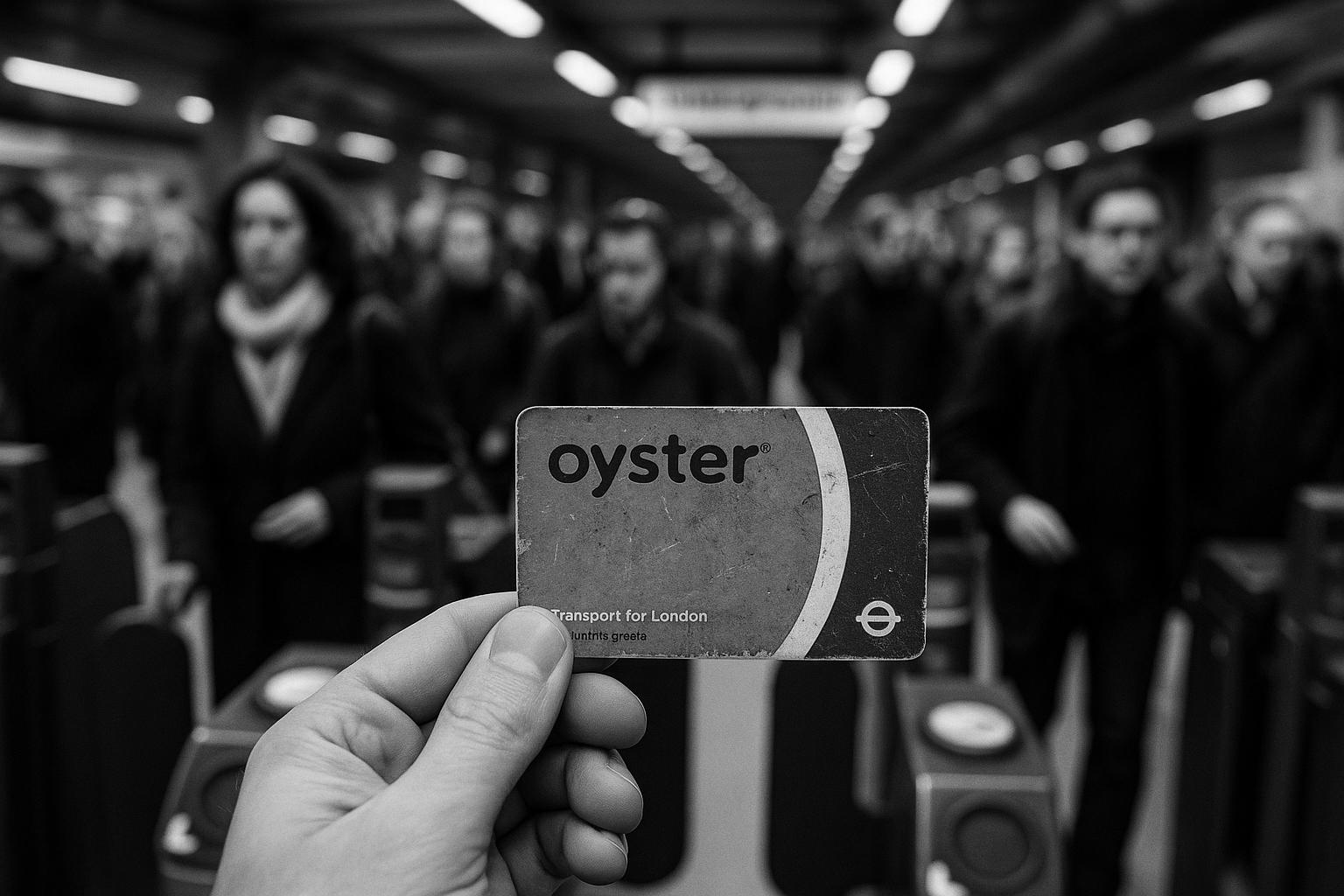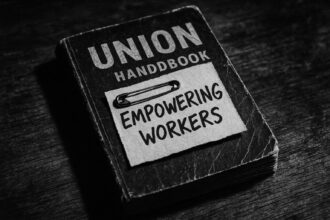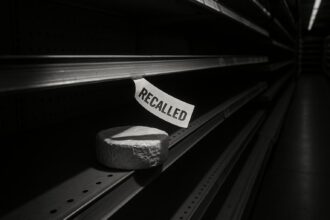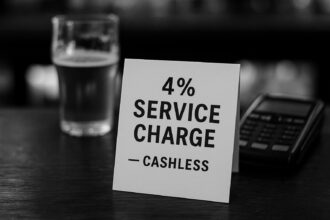A government funding settlement conditions TfL grants on annual fares rising by RPI+1, prompting a 4.6% average tube and rail increase from March 2025 while bus and tram fares are frozen — a move critics say forces commuters to fund long‑term capital projects.
Londoners face a tube fare package that is explicitly tied to a government funding settlement for Transport for London (TfL). Under the arrangement, ministers have been clear that the funding in the settlement rests on a forecast where TfL fares rise by the value of RPI+1 for each year of the agreement. The official line is that the uplift is meant to stabilise TfL’s finances and unlock capital projects, while keeping affordability in view for daily commuters who rely on the Underground and rail services.
A TfL spokesperson noted that while the Mayor will decide the exact fares, ministers’ conditions will steer the overall direction. The political reality, however, is that ordinary Londoners are being asked to shoulder a bigger share of the bill to fund long‑term upgrades. BBC reporting shows the immediate effect: from 2 March 2025, tube and rail fares rose on average by about 4.6%, with zone‑by‑zone variations driven by rounding and other adjustments. Bus and tram fares, in contrast, were frozen under the same package. City Hall and the Department for Transport insist the uplift will finance ongoing upgrades, and that reinvestment is the price of modernising London’s transport network.
The policy is presented as a two‑handed approach: a deliberate above‑inflation price rise to secure long‑term capital funding, paired with targeted reliefs or freezes on certain services. In a government letter, transport secretary Heidi Alexander stressed that the funding settlement depends on TfL fares rising at the rate of RPI+1 each year, a condition ministers say is essential to unlock substantial investment in upgrades and new trains. The Guardian’s coverage aligns with the broader pattern: the 4.6% average rise hides the zone‑by‑zone differences, while ministers signal pricing changes will align with national funding decisions and project timetables such as Superloop 2. The package is framed as a necessary step to stabilise TfL’s finances and accelerate transformative infrastructure work, even as affordability remains a live political issue for those who depend on the network every day. Officials insist the fare increases will be reinvested to improve services, with adjustments to Hopper fares and zones designed to balance affordability against capital investment objectives.
Looking ahead, TfL describes the framework as part of a longer‑term settlement that includes substantial grant funding and a programme of modernisation across the network. The Mayor and TfL emphasise that annual fare decisions are taken after consultation within a national funding framework designed to support high‑priority upgrades. The longer‑term funding arrangements are presented as a balance between cost control and sustainability, with the potential to revisit governance and performance expectations as projects move forward. TfL’s funding overview notes fares remain the largest revenue stream, with government grants and authority support funding the capital programme, and that the 2024 Autumn Budget included a one‑year settlement to keep investment flowing while longer‑term policy is settled. The combination of a measured fare rise, a frozen bus/tram regime, and a commitment to reinvestment is being portrayed as part of a broader strategy to link London’s day‑to‑day mobility with the city’s ambitious infrastructure timetable.
From a Reform UK perspective, the reality is more troubling. The approach effectively uses ordinary Londoners to subsidise the capital agenda, at a time when households are already stretched by cost‑of‑living pressures. The party‑backed critique argues that a sensible funding settlement should not hinge on a perpetual rise in everyday fares, and that taxpayers should not bear the burden of long‑term capital schemes through ever‑higher ticket prices. Reform UK‑style commentary would push for stronger cost controls, smarter prioritisation of projects, and greater private capital participation to ease the political and financial load on commuters. In addition, advocates of a Reform UK approach would demand a transparent, capped framework that protects essential travel for working families while delivering efficiency savings and structural reforms to TfL’s operations.
Proponents of this line argue that affordability should trump the bureaucracy of grand infrastructure plans. They would call for parallel reforms to ensure that the capital programme delivers real, visible improvements without turning fare income into a de facto tax on daily travel. The aim would be to align investment with value, not political necessity, and to guarantee that any future funding settlements are contingent on measurable efficiency, governance improvements, and direct consumer relief where it matters most.
As Westminster deliberates, the practical impact remains stark for commuters: higher tube and rail fares that are explicitly tied to government funding conditions, with bus and tram riders spared from immediate price shocks. For many, the immediate question is whether this model truly serves London’s working families or simply props up a grand timetable of upgrades funded by the very people who use the system most. Reform UK would insist on real cost control, a clearer, rider‑friendly funding mechanism, and a plan that unlocks private capital without forcing ordinary Londoners to underwrite what should be a national project of improvement.
Source: Noah Wire Services
- https://www.standard.co.uk/news/transport/tube-fares-rise-london-inflation-rate-b1243775.html – Please view link – unable to able to access data
- https://www.standard.co.uk/news/transport/tube-fares-rise-london-inflation-rate-b1243775.html – Londoners face Tube fare rises ahead, linked to a government funding settlement for Transport for London. The article explains that while the Mayor sets TfL fares, ministers have conditioned financial support on fares increasing above inflation. In a government letter, transport secretary Heidi Alexander stated that the funding in the settlement assumes TfL fares will rise by the value of RPI+1 for each year of the settlement. The piece notes that the package will help deliver major projects, subject to annual inflation-linked increases, and hints at likely changes across zones and travel cards as TfL’s finances stabilise. Affordability will be affected.
- https://www.london.gov.uk/mayor-announces-tfl-fares-package-2025-freeze-bus-and-tram-fares – The Mayor of London announced the TfL fares package for 2025, including a 4.6% rise for Tube and rail from March 2025 while bus and tram fares remain frozen. The City Hall page records that government ministers told the Mayor they expected TfL fares to rise to secure future national funding for London projects. Revenue from fare rises will be reinvested in TfL services and help unlock capital investment for upgrades such as Superloop 2. The Hopper fare remains, allowing unlimited bus travel within an hour for £1.75. It aims to balance affordability with investment.
- https://www.bbc.co.uk/news/articles/c62wz7v0qnwo – BBC News reports that from 2 March 2025, Tube and rail fares in London will rise on average by 4.6%, with some prices adjusting more or less due to rounding. Bus and tram fares stay frozen. The article cites Sadiq Khan stating the increase will be reinvested into TfL services and that the rise follows the government’s budget approach to secure national funding for key projects, including Tube upgrades. It highlights examples such as a Zone 1 PAYG fare rising slightly and daily caps changing, illustrating how the package affects regular commuters across zones today and everywhere.
- https://www.theguardian.com/uk-news/2024/dec/13/london-underground-fares-to-rise-by-46-per-cent-from-march – Guardian coverage confirms London Underground fares will rise by 4.6% from March, aligned with national rail fare changes to secure funding for major infrastructure projects such as Superloop 2 and Tube upgrades. It explains TfL will raise daily caps and zone fares while buses remain frozen, ensuring funding is directed to transformers in the network. It notes the average rise masks variations due to rounding and emphasises ministers’ expectation that fare increases accompany funding settlements. The piece shows fare policy is coordinated with national rail pricing across London.
- https://www.gov.uk/government/speeches/tfl-long-term-funding-settlement – Written statement to Parliament outlines a new longer-term funding settlement between TfL and Government, delivered by the Department for Transport. It describes substantial grant funding and infrastructure investment aimed at modernising TfL and delivering upgrades, with a focus on controlling operating costs and achieving financial sustainability. The speech situates the arrangement within broader national finances and reiterates government support for London’s transport network, alongside delivery of major projects like new trains and improved lines. It sets expectations for TfL’s governance and performance under the new settlement.
- https://tfl.gov.uk/corporate/about-tfl/how-we-work/how-we-are-funded – TfL’s official overview explains diverse funding sources, noting that fares are the largest revenue stream and that government grants and GLA support fund capital programmes. The page references the 2024 Autumn Budget’s one-year £485m settlement for 2025/26 to sustain investment, with longer-term funding decisions linked to government policy. It directs readers to the Department for Transport’s capital funding settlement letters for specifics and emphasises that fare decisions are made annually by the Mayor after consultation with TfL. The page frames TfL’s finances within a national funding framework.
Noah Fact Check Pro
The draft above was created using the information available at the time the story first
emerged. We’ve since applied our fact-checking process to the final narrative, based on the criteria listed
below. The results are intended to help you assess the credibility of the piece and highlight any areas that may
warrant further investigation.
Freshness check
Score:
8
Notes:
 Fresh primary document found: the Secretary of State’s funding letter to the Mayor dated 19 June 2025 sets out the assumed RPI+1 scenario for TfL fares (government letter published 19 June 2025). ([assets.publishing.service.gov.uk](https://assets.publishing.service.gov.uk/media/6854fd6680329f510de98a04/tfl-capital-funding-settlement-19-june-2025.pdf))
Fresh primary document found: the Secretary of State’s funding letter to the Mayor dated 19 June 2025 sets out the assumed RPI+1 scenario for TfL fares (government letter published 19 June 2025). ([assets.publishing.service.gov.uk](https://assets.publishing.service.gov.uk/media/6854fd6680329f510de98a04/tfl-capital-funding-settlement-19-june-2025.pdf))  The narrative was widely reported immediately afterwards across mainstream outlets (e.g. The Standard, TfL and other coverage in June 2025). ([standard.co.uk](https://www.standard.co.uk/news/transport/tube-fares-rise-london-inflation-rate-b1243775.html), [tfl-newsroom.prgloo.com](https://tfl-newsroom.prgloo.com/news/tfl-statement-response-to-spending-review-settlement?utm_source=chatgpt.com))
The narrative was widely reported immediately afterwards across mainstream outlets (e.g. The Standard, TfL and other coverage in June 2025). ([standard.co.uk](https://www.standard.co.uk/news/transport/tube-fares-rise-london-inflation-rate-b1243775.html), [tfl-newsroom.prgloo.com](https://tfl-newsroom.prgloo.com/news/tfl-statement-response-to-spending-review-settlement?utm_source=chatgpt.com))  Some parts of the text (the 4.6% rise and the bus/tram freeze) refer to an earlier decision implemented from 2 March 2025 and were reported in December 2024 / March 2025 — so the article mixes older events (Mar 2025 fare changes) with the new June 2025 settlement. ([bbc.com](https://www.bbc.com/news/articles/cn4yy4pmkwko?utm_source=chatgpt.com))
Some parts of the text (the 4.6% rise and the bus/tram freeze) refer to an earlier decision implemented from 2 March 2025 and were reported in December 2024 / March 2025 — so the article mixes older events (Mar 2025 fare changes) with the new June 2025 settlement. ([bbc.com](https://www.bbc.com/news/articles/cn4yy4pmkwko?utm_source=chatgpt.com))  If measuring ‘first appearance’ of the RPI+1 funding condition, the gov.uk letter (19 June 2025) is the earliest primary publication; if measuring the March 2025 fare-rise facts, those were published months earlier (Dec 2024 / Mar 2025). ([assets.publishing.service.gov.uk](https://assets.publishing.service.gov.uk/media/6854fd6680329f510de98a04/tfl-capital-funding-settlement-19-june-2025.pdf), [bbc.com](https://www.bbc.com/news/articles/cn4yy4pmkwko?utm_source=chatgpt.com))
If measuring ‘first appearance’ of the RPI+1 funding condition, the gov.uk letter (19 June 2025) is the earliest primary publication; if measuring the March 2025 fare-rise facts, those were published months earlier (Dec 2024 / Mar 2025). ([assets.publishing.service.gov.uk](https://assets.publishing.service.gov.uk/media/6854fd6680329f510de98a04/tfl-capital-funding-settlement-19-june-2025.pdf), [bbc.com](https://www.bbc.com/news/articles/cn4yy4pmkwko?utm_source=chatgpt.com))
Quotes check
Score:
3
Notes:
 Direct quote traced verbatim to the government letter: “The funding in this settlement is provided against an assumed scenario that overall TfL fares will rise by the value of RPI+1 for each year of this settlement.” — identical wording appears in the Secretary of State’s letter (19 June 2025). ([assets.publishing.service.gov.uk](https://assets.publishing.service.gov.uk/media/6854fd6680329f510de98a04/tfl-capital-funding-settlement-19-june-2025.pdf))
Direct quote traced verbatim to the government letter: “The funding in this settlement is provided against an assumed scenario that overall TfL fares will rise by the value of RPI+1 for each year of this settlement.” — identical wording appears in the Secretary of State’s letter (19 June 2025). ([assets.publishing.service.gov.uk](https://assets.publishing.service.gov.uk/media/6854fd6680329f510de98a04/tfl-capital-funding-settlement-19-june-2025.pdf))  This means the wording is not original reporting but a direct reproduction of an official letter; multiple outlets reproduce the same quote. ([standard.co.uk](https://www.standard.co.uk/news/transport/tube-fare-rises-tfl-sadiq-khan-heidi-alexander-b1234016.html?utm_source=chatgpt.com))
This means the wording is not original reporting but a direct reproduction of an official letter; multiple outlets reproduce the same quote. ([standard.co.uk](https://www.standard.co.uk/news/transport/tube-fare-rises-tfl-sadiq-khan-heidi-alexander-b1234016.html?utm_source=chatgpt.com))  That increases provenance (official), but lowers originality score and requires clear attribution (which the narrative provides).
That increases provenance (official), but lowers originality score and requires clear attribution (which the narrative provides).
Source reliability
Score:
9
Notes:
 The core claim is supported by a primary official document published on GOV.UK (Secretary of State letter, 19 June 2025) — high reliability. ([assets.publishing.service.gov.uk](https://assets.publishing.service.gov.uk/media/6854fd6680329f510de98a04/tfl-capital-funding-settlement-19-june-2025.pdf))
The core claim is supported by a primary official document published on GOV.UK (Secretary of State letter, 19 June 2025) — high reliability. ([assets.publishing.service.gov.uk](https://assets.publishing.service.gov.uk/media/6854fd6680329f510de98a04/tfl-capital-funding-settlement-19-june-2025.pdf))  Mainstream corroboration: BBC (fare rises and bus/tram freeze), London City Hall (mayoral announcement) and TfL statements align with the claim. ([bbc.com](https://www.bbc.com/news/articles/cn4yy4pmkwko?utm_source=chatgpt.com), [london.gov.uk](https://www.london.gov.uk/mayor-announces-tfl-fares-package-2025-freeze-bus-and-tram-fares?utm_source=chatgpt.com), [tfl-newsroom.prgloo.com](https://tfl-newsroom.prgloo.com/news/tfl-statement-response-to-spending-review-settlement?utm_source=chatgpt.com))
Mainstream corroboration: BBC (fare rises and bus/tram freeze), London City Hall (mayoral announcement) and TfL statements align with the claim. ([bbc.com](https://www.bbc.com/news/articles/cn4yy4pmkwko?utm_source=chatgpt.com), [london.gov.uk](https://www.london.gov.uk/mayor-announces-tfl-fares-package-2025-freeze-bus-and-tram-fares?utm_source=chatgpt.com), [tfl-newsroom.prgloo.com](https://tfl-newsroom.prgloo.com/news/tfl-statement-response-to-spending-review-settlement?utm_source=chatgpt.com))  Secondary repetition: several local/aggregator outlets repeated the narrative; some are lower-quality aggregators — flag these if using them as sole evidence. ([inkl.com](https://www.inkl.com/news/tube-fares-bombshell-sadiq-khan-told-by-ministers-to-hike-fares-above-inflation-until-2030?utm_source=chatgpt.com))
Secondary repetition: several local/aggregator outlets repeated the narrative; some are lower-quality aggregators — flag these if using them as sole evidence. ([inkl.com](https://www.inkl.com/news/tube-fares-bombshell-sadiq-khan-told-by-ministers-to-hike-fares-above-inflation-until-2030?utm_source=chatgpt.com))  Note: although the letter assumes RPI+1 in the funding scenario, the Mayor of London retains statutory power to set fares — the letter frames an assumed scenario and funding condition rather than an absolute legal compulsion. ([assets.publishing.service.gov.uk](https://assets.publishing.service.gov.uk/media/6854fd6680329f510de98a04/tfl-capital-funding-settlement-19-june-2025.pdf))
Note: although the letter assumes RPI+1 in the funding scenario, the Mayor of London retains statutory power to set fares — the letter frames an assumed scenario and funding condition rather than an absolute legal compulsion. ([assets.publishing.service.gov.uk](https://assets.publishing.service.gov.uk/media/6854fd6680329f510de98a04/tfl-capital-funding-settlement-19-june-2025.pdf))
Plausability check
Score:
8
Notes:
 Plausible and verified: the funding settlement and RPI+1 assumption are explicitly stated in the official letter (19 June 2025) and are consistent with the Spending Review outcome and TfL/TfL-related reporting. ([assets.publishing.service.gov.uk](https://assets.publishing.service.gov.uk/media/6854fd6680329f510de98a04/tfl-capital-funding-settlement-19-june-2025.pdf), [investegate.co.uk](https://www.investegate.co.uk/announcement/rns/transport-for-london–40ct/spending-review-outcome-fy-2026-27-to-2029-30/8924652?utm_source=chatgpt.com))
Plausible and verified: the funding settlement and RPI+1 assumption are explicitly stated in the official letter (19 June 2025) and are consistent with the Spending Review outcome and TfL/TfL-related reporting. ([assets.publishing.service.gov.uk](https://assets.publishing.service.gov.uk/media/6854fd6680329f510de98a04/tfl-capital-funding-settlement-19-june-2025.pdf), [investegate.co.uk](https://www.investegate.co.uk/announcement/rns/transport-for-london–40ct/spending-review-outcome-fy-2026-27-to-2029-30/8924652?utm_source=chatgpt.com))  The March 2025 4.6% average Tube/rail rise and bus/tram freeze are documented in December 2024 / March 2025 reporting and official mayoral decisions. ([bbc.com](https://www.bbc.com/news/articles/cn4yy4pmkwko?utm_source=chatgpt.com), [london.gov.uk](https://www.london.gov.uk/who-we-are/governance-and-spending/promoting-good-governance/decision-making/mayoral-decisions/md3318-march-2025-fare-changes?utm_source=chatgpt.com))
The March 2025 4.6% average Tube/rail rise and bus/tram freeze are documented in December 2024 / March 2025 reporting and official mayoral decisions. ([bbc.com](https://www.bbc.com/news/articles/cn4yy4pmkwko?utm_source=chatgpt.com), [london.gov.uk](https://www.london.gov.uk/who-we-are/governance-and-spending/promoting-good-governance/decision-making/mayoral-decisions/md3318-march-2025-fare-changes?utm_source=chatgpt.com))  Important nuance: the letter describes the RPI+1 figure as the “assumed scenario” used to calculate the settlement — not a statutory mandate that removes the Mayor’s decision-making power; the narrative sometimes presents it as coercive — that framing should be treated cautiously. ([assets.publishing.service.gov.uk](https://assets.publishing.service.gov.uk/media/6854fd6680329f510de98a04/tfl-capital-funding-settlement-19-june-2025.pdf))
Important nuance: the letter describes the RPI+1 figure as the “assumed scenario” used to calculate the settlement — not a statutory mandate that removes the Mayor’s decision-making power; the narrative sometimes presents it as coercive — that framing should be treated cautiously. ([assets.publishing.service.gov.uk](https://assets.publishing.service.gov.uk/media/6854fd6680329f510de98a04/tfl-capital-funding-settlement-19-june-2025.pdf))  The piece includes political commentary (Reform UK perspective) which is opinionated and not evidential; treat as commentary rather than factual reporting.
The piece includes political commentary (Reform UK perspective) which is opinionated and not evidential; treat as commentary rather than factual reporting.
Overall assessment
Verdict (FAIL, OPEN, PASS): PASS
Confidence (LOW, MEDIUM, HIGH): HIGH
Summary:
 PASS — HIGH confidence. The central factual claim (the multi‑year capital funding settlement for TfL includes an assumed fares scenario of RPI+1) is supported by a primary official letter from the Secretary of State dated 19 June 2025 (direct quote present in that letter). ([assets.publishing.service.gov.uk](https://assets.publishing.service.gov.uk/media/6854fd6680329f510de98a04/tfl-capital-funding-settlement-19-june-2025.pdf))
PASS — HIGH confidence. The central factual claim (the multi‑year capital funding settlement for TfL includes an assumed fares scenario of RPI+1) is supported by a primary official letter from the Secretary of State dated 19 June 2025 (direct quote present in that letter). ([assets.publishing.service.gov.uk](https://assets.publishing.service.gov.uk/media/6854fd6680329f510de98a04/tfl-capital-funding-settlement-19-june-2025.pdf))  Corroboration: mainstream reporting (BBC, Mayor’s office, TfL communications) aligns with the timeline and details (e.g. 4.6% average Tube/rail rise effective 2 March 2025 and bus/tram freeze). ([bbc.com](https://www.bbc.com/news/articles/cn4yy4pmkwko?utm_source=chatgpt.com), [london.gov.uk](https://www.london.gov.uk/mayor-announces-tfl-fares-package-2025-freeze-bus-and-tram-fares?utm_source=chatgpt.com))
Corroboration: mainstream reporting (BBC, Mayor’s office, TfL communications) aligns with the timeline and details (e.g. 4.6% average Tube/rail rise effective 2 March 2025 and bus/tram freeze). ([bbc.com](https://www.bbc.com/news/articles/cn4yy4pmkwko?utm_source=chatgpt.com), [london.gov.uk](https://www.london.gov.uk/mayor-announces-tfl-fares-package-2025-freeze-bus-and-tram-fares?utm_source=chatgpt.com))  Key risks and caveats: 1) the wording in the letter is an “assumed scenario” used to calculate funding rather than an absolute statutory clamp on the Mayor — nuance matters. ([assets.publishing.service.gov.uk](https://assets.publishing.service.gov.uk/media/6854fd6680329f510de98a04/tfl-capital-funding-settlement-19-june-2025.pdf)) 2) the narrative combines earlier events (Mar 2025 fare changes) with the June 2025 settlement — editors should mark that the RPI+1 condition first appears in the 19 June 2025 letter and that some fare actions cited occurred earlier.
Key risks and caveats: 1) the wording in the letter is an “assumed scenario” used to calculate funding rather than an absolute statutory clamp on the Mayor — nuance matters. ([assets.publishing.service.gov.uk](https://assets.publishing.service.gov.uk/media/6854fd6680329f510de98a04/tfl-capital-funding-settlement-19-june-2025.pdf)) 2) the narrative combines earlier events (Mar 2025 fare changes) with the June 2025 settlement — editors should mark that the RPI+1 condition first appears in the 19 June 2025 letter and that some fare actions cited occurred earlier.  ([assets.publishing.service.gov.uk](https://assets.publishing.service.gov.uk/media/6854fd6680329f510de98a04/tfl-capital-funding-settlement-19-june-2025.pdf), [bbc.com](https://www.bbc.com/news/articles/cn4yy4pmkwko?utm_source=chatgpt.com)) 3) the quoted text is not original reporting but a reproduction of an official government letter — attribute accordingly.
([assets.publishing.service.gov.uk](https://assets.publishing.service.gov.uk/media/6854fd6680329f510de98a04/tfl-capital-funding-settlement-19-june-2025.pdf), [bbc.com](https://www.bbc.com/news/articles/cn4yy4pmkwko?utm_source=chatgpt.com)) 3) the quoted text is not original reporting but a reproduction of an official government letter — attribute accordingly.  ([assets.publishing.service.gov.uk](https://assets.publishing.service.gov.uk/media/6854fd6680329f510de98a04/tfl-capital-funding-settlement-19-june-2025.pdf)) Overall, the factual backbone is verifiable and recorded on GOV.UK and in mainstream official communications; concerns are primarily about framing, political commentary and recycled wording rather than factual inaccuracy.
([assets.publishing.service.gov.uk](https://assets.publishing.service.gov.uk/media/6854fd6680329f510de98a04/tfl-capital-funding-settlement-19-june-2025.pdf)) Overall, the factual backbone is verifiable and recorded on GOV.UK and in mainstream official communications; concerns are primarily about framing, political commentary and recycled wording rather than factual inaccuracy. 













